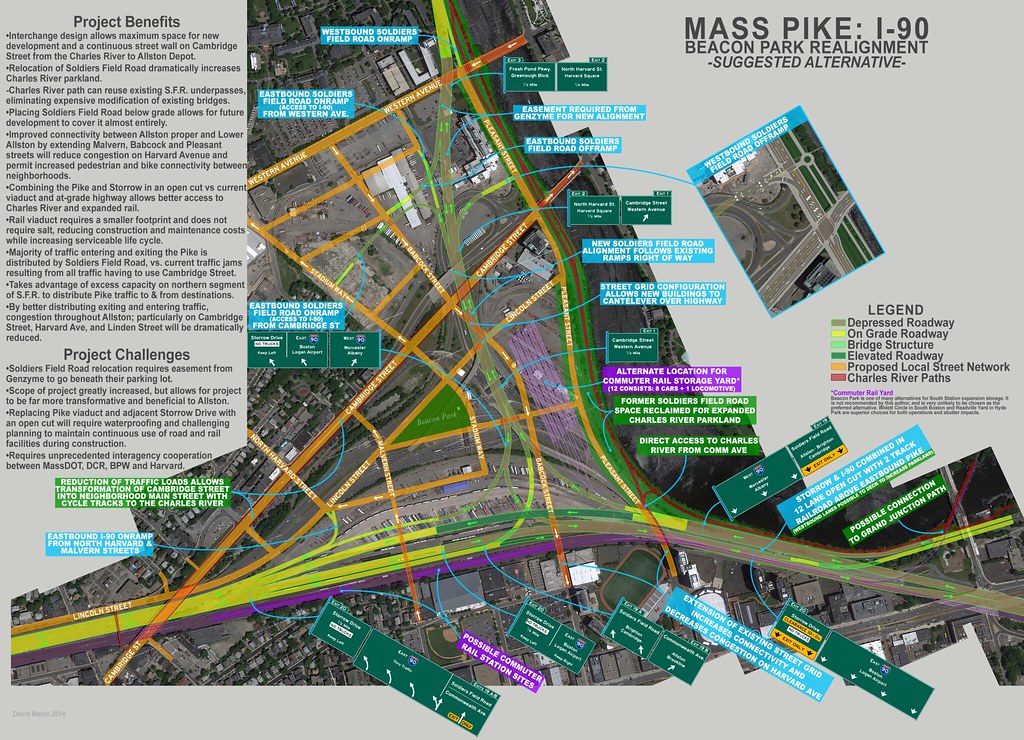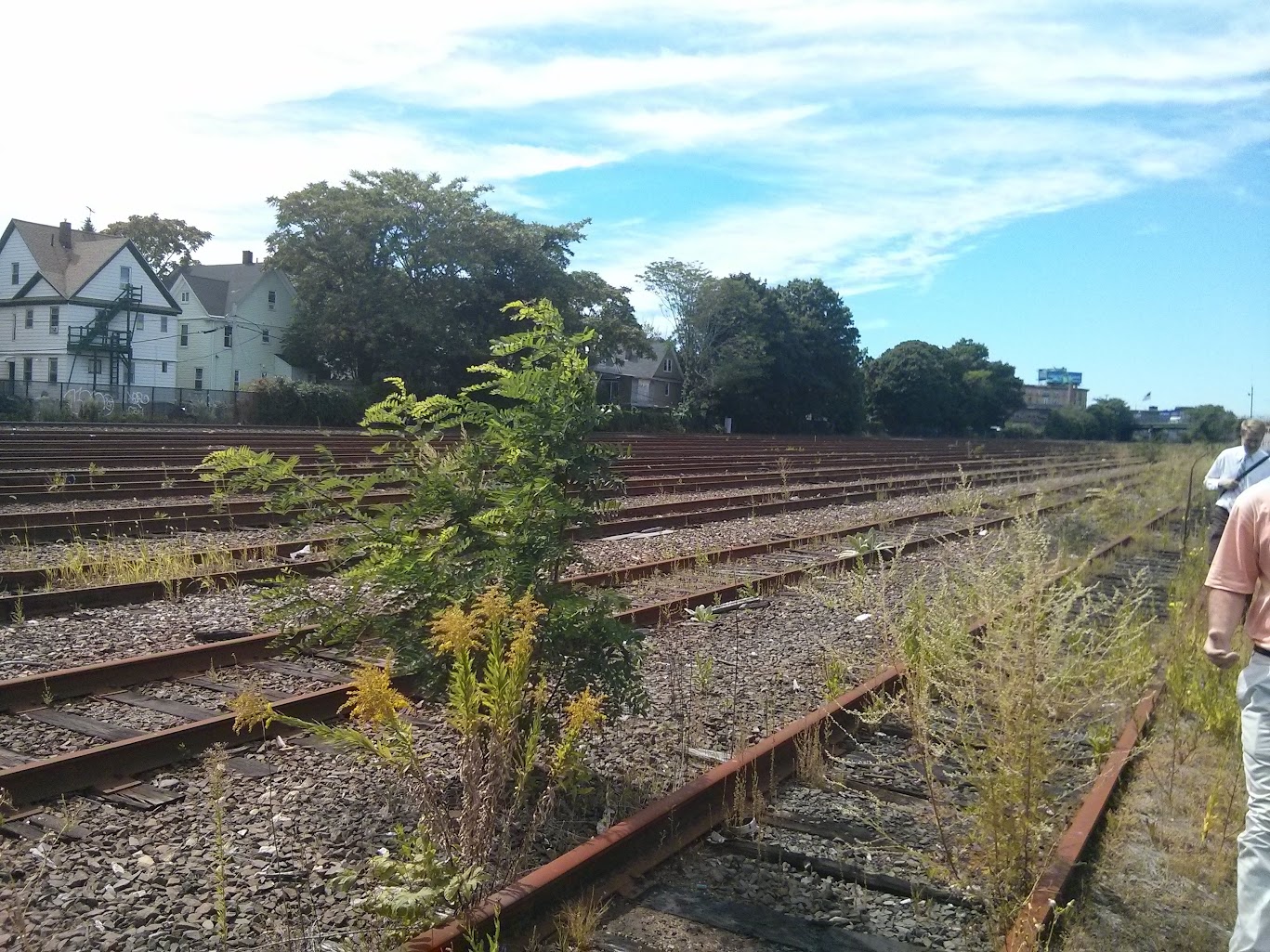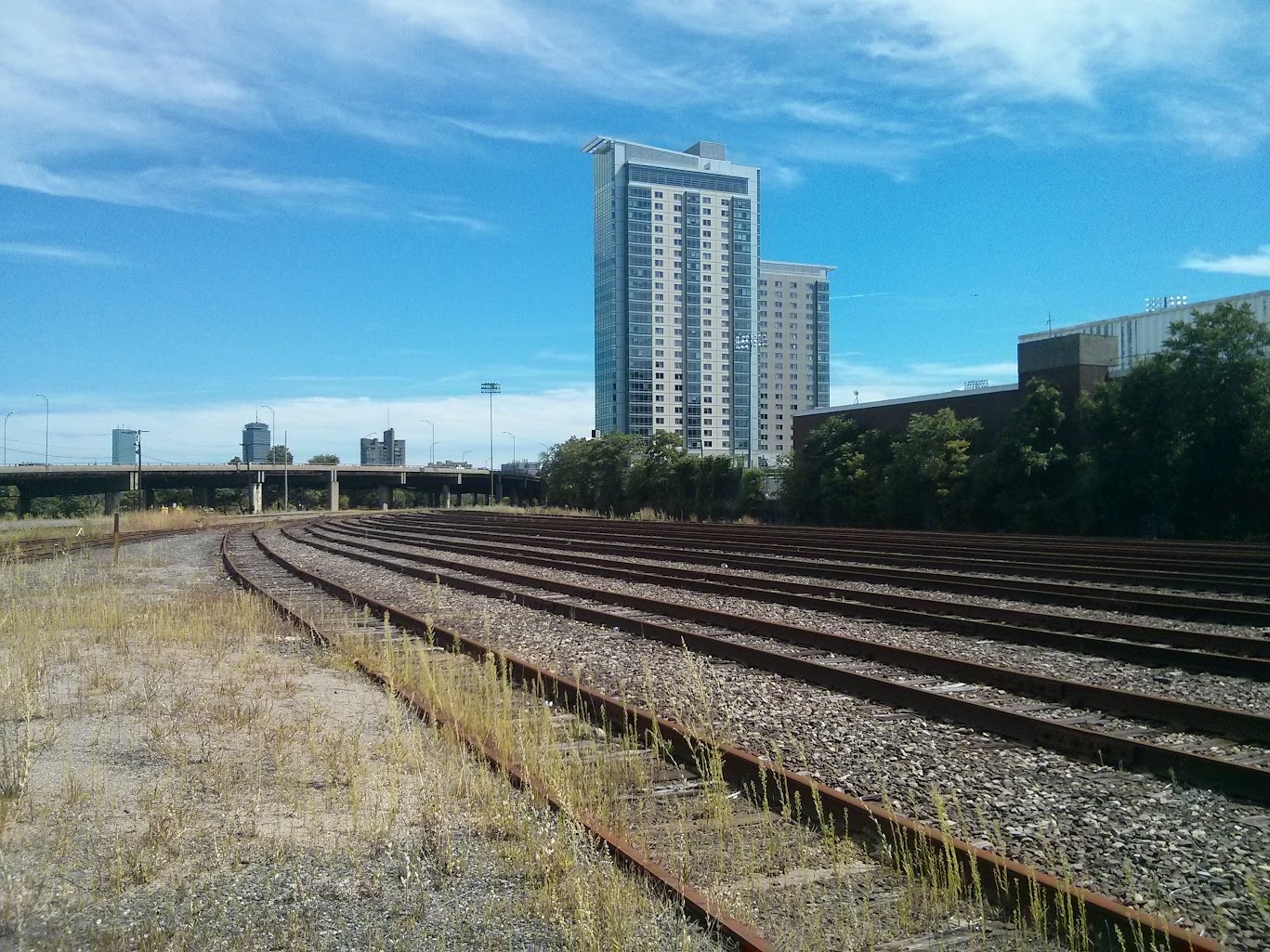Re: I-90 Interchange Improvement Project (Allston)
F-Line - if I understand you correctly, you're arguing that DMUs anywhere on the Worcester line is essentially a pipe dream because of impossible service constraints, and that running the Grand Junction is also a pipe dream because of grade crossings?
Grand Junction, no. I very much doubt it, based on the traffic modeling around the crossings in the Worcester-NS study. The traffic queue impacts and gate times of 5 morning inbound runs, 5 evening outbound runs, zero off-peak except same-old freight round-trip and non-revenue equipment swaps were spelled out to the nines in the study. The difference between that service threshold deemed tolerable for rush hour queues on Mass Ave./Main/Broadway and for all affected bus routes at those crossings...and the service threshold of all-day DMU's is astronomical. Just pull up a calculator and start feeding TPH numbers through the gate timings and it collapses instantly in a heap. Either the original study was pants-on-fire wrong (I doubt it...it was a favorable rec) or the state's new assumptions are naive beyond belief. Since the study provides real testable math very much in line with what you see in any transit study and any real-world traffic counts around a crossing...I'm inclined to trust arithmetic over napkin sketches of ponies.
----------------------------------------------------------
DMU's on the Worcester Line most definitely are realistic if they do the upgrade work. Worcester Line has tons of unused native capacity. It's just handicapped by the inflexibility for passing ops and the speed limit imposed by the signal system. And fixing that is a big expense to swallow without the sort of fed stimulus help they were gifted for the almost-finished Fitchburg Line re-signaling.
-- Everything has to run single-file, meaning there are only a few opportunities per day for a Worcester express to make brisk time without getting stuck behind a Framingham local. It either passes at Yawkey, Route 128, or not at all. This is why there aren't distinct express service patterns to Worcester all day long at predictable intervals. They cram them in when they've got an opening, but it's not frequency you can easily plan around.
-- When an outbound is running to Newton on the inbound track to reach those single platforms, absolutely nothing moves inbound between Wellesley Farms and Beacon Park unless it hits an opportunity on-the-button to switch to the outbound track (i.e. a 'wrong-rail' inbound passes a 'wrong-rail' outbound).
-- Given how low the inherent OTP margins are for Worcester, if something blows its window of opportunity for such precious few passing spots, it holds for a very very long time and gets very very late. And that's why when Worcester's late, it's late by a LOT. There's no in-between.
-- Obviously very few trains can stop in Newton at all because of this.
-- The outer half of the line does have modern cab signaling installed in the late-80's, and 4 sets of crossovers installed by the T during the mid-90's when service past Framingham resumed. It is being upgraded to FRA Class 4, which will allow 80 MPH speeds on the straighter portions. Doesn't involve any shovels-in-ground construction, just higher class of track upkeep and some minor re-timings. Work is ongoing, modestly improved travel times + a couple new trains will show up next year on a new set of schedules without any pre-announcement fanfare.
-- No such luck on the inner half of the line. It's shitty old Automatic Block Signals (ABS) which are capped at 60 MPH, and a royal pain to install more crossovers with the inflexibility of that system. Blame the state for not thinking ahead in the early 60's when the line was rebuilt inside 128 for the Pike and busted down from 4 to 2 tracks out to Framingham. Boston & Albany took a wad of unsupervised cash from the Turnpike Authority for their troubles, and installed the absolute-minimum afterthought system they could get away with. It would be easier for the state to just rip it all out and replace fresh with cab signals than try to shiv a bunch of new crossovers into the existing system or try to get their Amtrak-derived PTC system to mesh with it well enough to raise speeds. This same PTC system has run on the cab signaled Providence Line for 13 years and is damn near bulletproof there, but has never before been attempted on a non- cab signal line before. And--terryifying thought--the T is the only East Coast passenger carrier tasked with being guinea pigs for the never-designed cabless variant (thanks to the northside). So if it has limitations, Worcester's OTP could get an additional kick in the shins that becomes unresolvable until they do fund a rip-out/rebuild...after they broke it, reactively, and for way more money.
-- Because of the capacity discrepancy, you can only add so much by speeding up the outer half when everything has to run single-file on the inner half. Eventually the bunching either hits a ceiling or degrades OTP. And you can pretty much never increase service at the Newton stops until the platforms and crossover bottleneck is solved.
-- Theoretically you can add service short-turning at New Balance because of the 3 crossovers between the BBY tunnel and Everett St., so long as it doesn't go further (and going further is present-day moot because there's not even a crossover for getting onto the Riverside spur from the outbound track...new installation there is mandatory). But because the OTP margins are so incredibly thin all the way out to Worcester and any train missing its schedule slot into a crossover movement automatically goes catastrophically late...there's no way to maintain those Framingham/Worcester OTP margins with trains turning at West or New Balance. Even if 95% of the DMU vs. Worcester/Framingham train meets go off without a hitch between SS and NB...at 48 Worcester/Framingham trains per day and 240 per workweek, it only takes whiffing on a few of those meets--with the ensuing catastrophic delays bunching all the way back--to ruin it for everyone.
Therefore, this isn't going to work at all without redoing the whole 21 miles to Framingham with regularly-spaced crossovers and a signal system that can handle those traffic levels. Do that and you can pretty much have a Worcester super-express running every 30 mins. at peak and reaching Union Station in under an hour, a Framingham local running every 20 mins. at peak, those 5 directional peak trips from Worcester to North Station, an Amtrak movement every 2 hours, and some DMU running every 15 minutes in each direction.
So, say you have a track layout like this, with the missing double-track through Beacon Park filled, the 3 Newton stops properly rebuilt, and all of the line properly signaled for 80 MPH ops.
1.
South Station
2. (NEC split)
3.
Back Bay
4. (Yawkey-area crossovers)
5.
Yawkey
6. (Beacon Park east crossovers + split to layover yard)
7.
West (mainline platform, Grand Junction platform, passing track)
8. (Beacon Park west crossovers, Grand Junction split)
9.
New Balance (mainline platform + passing track)
10.
Newton Corner
11. (
new crossovers)
12.
Newtonville
13.
West Newton
14. (
new crossovers)
15.
Auburndale
16. (Riverside Jct., crossovers
relocated from Wellesley Farms to serve line split)
And then add a couple more sets between Riverside and Framingham placed around the most likely meet points for trains running express to overtake the locals. Depends on which of the 3 Wellesleys and which of the 2 Naticks gets skipped most often. No changes to the layout between Framingham and Worcester, which is well within capacity. And maybe widely-spaced sets for Amtrak every dozen miles or so to pass freights on the doubled-tracked Inland Route between the existing sets west of Worcester Union and east of Springfield Union. No tri-tracking needed like on the NEC because there isn't an extreme speed differential between shared traffic (and less so with the slowest overlap closest to the terminal), just a lot of resiliency and flexibility for nimble passing on varied train schedules.
Not hard. But like I said in the last post, if there isn't another shoe to drop about how they're going to fund those track/signal upgrades needed for
all services to coexist, it's a nonstarter. If they don't have a service plan for executing nimble ops--like they've made zero effort to roll out on Fairmount within tolerances of their
current unused line and vehicle capacity--it doesn't matter how nice a monument they build at West or how awesome those DMU's are to ride. It's going to be too infrequent and inflexible a service to draw passengers, it's going to bleed system-worst operating money and look like a total white elephant on capital expenditure. And if they don't touch the fare system to embrace transfer connectivity, there isn't a compelling reason to use it when the same old Red-to-Green slog gets you there at half the price and roll-dice odds of an on-time trip.





















